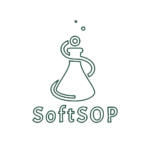Hazard Analysis and Critical Control Points (HACCP) is a systematic approach to food safety that identifies, evaluates, and controls hazards throughout the food production process. Developing Standard Operating Procedures (SOPs) aligned with HACCP principles ensures consistent application of food safety controls, regulatory compliance, and protection of consumers from biological, chemical, and physical hazards.
Why SOPs Are Essential for HACCP
SOPs provide a documented framework for implementing HACCP plans, ensuring that every employee understands their responsibilities and follows standardized procedures. Benefits include:
- Preventing Food Safety Hazards: SOPs define critical control points (CCPs) and preventive measures to reduce contamination risks (FDA, 2024).
- Ensuring Regulatory Compliance: Aligns operations with CFR Title 21, FSMA, and international standards like ISO 22000 (FSMA, 2011).
- Supporting Audit Readiness: Documentation enables traceability and verification during internal and external audits (USDA, 2023).
- Enhancing Operational Consistency: Standardized procedures improve efficiency and reduce errors (ISO 9001:2015).
Core Components of HACCP SOPs
- Purpose and Scope
Define the SOP objective, the scope of processes covered, and the personnel responsible for implementation. - Responsibilities
Assign accountability for monitoring CCPs, conducting inspections, and implementing corrective actions. - Materials and Equipment
List tools, measurement devices, chemical agents, and personal protective equipment needed to maintain HACCP controls. - Procedures
Step-by-step instructions should include:- Identification and monitoring of CCPs.
- Control measures for each hazard type (biological, chemical, physical).
- Recordkeeping and verification procedures.
- Monitoring and Verification
Define inspection schedules, sampling procedures, testing methods, and documentation to ensure CCPs remain within safe limits. - Corrective Actions
Outline actions to take if critical limits are exceeded, including product segregation, reprocessing, retraining, and documentation. - Documentation and References
Include links to regulatory standards and internal policies to ensure alignment with food safety requirements.
Implementation Process
Conduct a Hazard Analysis
Identify potential hazards in raw materials, processing steps, and finished products. Prioritize risks based on severity and likelihood.
Determine Critical Control Points (CCPs)
Identify points in the process where hazards can be prevented, eliminated, or reduced to acceptable levels.
Develop SOPs for Each CCP
Document monitoring procedures, critical limits, verification activities, and corrective actions.
Employee Training
Ensure all personnel understand the SOPs, the importance of each CCP, and how to record and report data accurately.
Monitoring and Continuous Improvement
Regularly review HACCP SOPs, verify CCP compliance, update procedures based on new risks, and integrate lessons learned from incidents or audits (WHO, 2021).
Recordkeeping
Maintain detailed logs of monitoring results, corrective actions, and verification activities to support traceability and regulatory compliance.
Benefits of HACCP SOPs
- Regulatory Compliance: Meets FDA, FSMA, and USDA requirements (CFR Title 21, 2024).
- Food Safety Assurance: Protects consumers and reduces liability.
- Operational Efficiency: Streamlines food safety processes and reduces errors.
- Audit Readiness: Detailed records support inspections and verification.
Read the full article
Key References:
FDA (2024) – Current Good Manufacturing Practice, Hazard Analysis, and Risk-Based Preventive Controls for Human Food
Outlines requirements for preventive controls and food safety practices, supporting HACCP implementation.
https://www.fda.gov
FSMA (2011) – Food Safety Modernization Act
Emphasizes preventive controls and modernized food safety measures in food production and distribution.
https://www.fda.gov/food/food-safety-modernization-act-fsma
CFR Title 21 (2024) – Food and Drugs Regulations
Governs legal requirements for sanitation, hygiene, labeling, and HACCP compliance in the United States.
https://www.ecfr.gov/current/title-21
ISO 22000:2018 – Food Safety Management Systems Requirements
Provides international guidance for managing food safety hazards and maintaining consistent operational quality.
https://www.iso.org/iso-22000-food-safety.html
ISO 9001:2015 – Quality Management Systems Requirements
Supports implementation of quality management principles to improve operational efficiency and product consistency.
https://www.iso.org/iso-9001-quality-management.html
WHO (2021) – Food Safety: Key Facts
Presents global insights into food safety risks and prevention strategies for foodborne illnesses.
https://www.who.int/news-room/fact-sheets/detail/food-safety
USDA (2023) – Sanitation Guidelines and Best Practices
Provides recommended hygiene procedures for food production and processing facilities.
https://www.fsis.usda.gov

